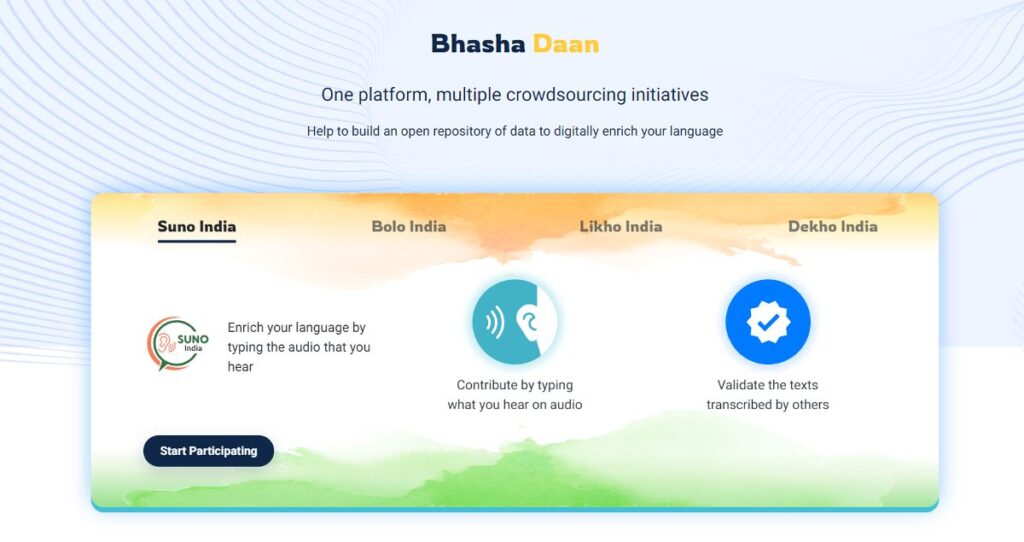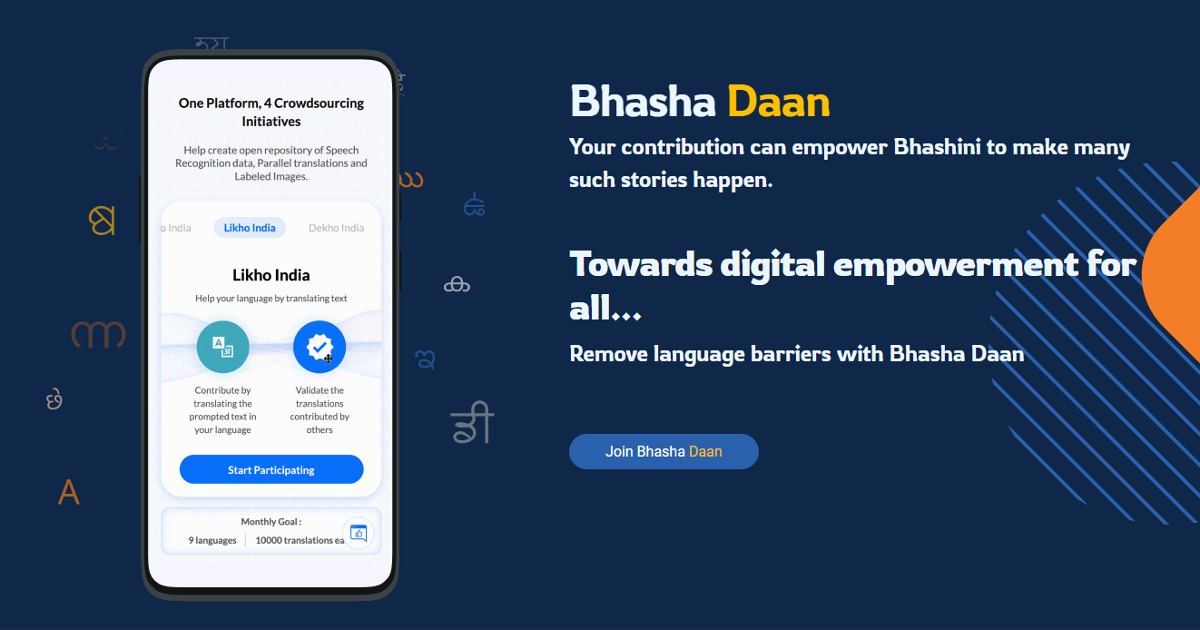To make Artificial Intelligence (AI) and Natural Language Processing (NLP) resources accessible to MSMEs, Startups, and Individual Innovators in the public domain, the government has launched the Bhashini platform.
By connecting residents to the nation’s digital activities in their language through Bhashini, the government hopes to empower them and promote digital inclusion. Due to its interconnection, it is also anticipated to speed up the development of the nation’s digital ecosystem.
Read More: ChatGPT Code Interpreter Free: How To Configure Easily
Read More: How to Use Canva Plugin on ChatGPT
Read More: How to Use ChatGPT with Siri on your iPhone
This effort also aims to greatly increase the amount of material in Indian languages in areas of public interest, including governance and policy, as well as science and technology, to encourage people to use the internet in their native tongue.

As the Ministry of Electronics and IT stated, “The mission will create and nurture an ecosystem involving Central and State government agencies and start-ups, working together to develop and deploy innovative products and services in Indian languages.”
The ministry added that businesses have a huge opportunity to develop innovative products and solutions that may benefit every person, regardless of their language, because of multilingualism.
Therefore, the government believes that giving people access to information resources and digital empowerment is vital to achieving Digital India’s goals.
Who introduced Bhashini?
IT Minister Ashwini Vaishnaw stated in his speech at Digital India Week 2022 that “Bhashini has been designed with a concept by which individuals speaking one language can be connected with people speaking any other language. The minister continued, “We do believe that Bhashini, which was developed today for Indian languages, will develop into a worldwide platform for all other languages around the globe. He also asked the executives there to “take a look at it (Bhashini), use it, create new solutions, and take it to a new level” while speaking at the occasion.
Interestingly, the IT ministry hosted a conference with well-known companies operating in the Indian Language space in May of this year to promote their engagement in “Mission Digital India Bhashini.” In the meeting’s opening speaker, Rajeev Chandrasekhar, Minister of State for Electronics and Information Technology, Skill Development, and Entrepreneurship, said to the 73 startups in the AI and language technology fields: “We see the role of startups in innovation, development, as well as consumption of technology.”
“Startups are a crucial component of our digital ecosystem, and under Mission Digital India Bhashini, they will receive assistance in creating IT products that can be used in India and that are supported by Indian languages. In the long run, I hope this will result in more unicorns and a greater number of AI and language-based startups.
How Bhashini Works

To contribute to the ‘Bhashini’ mission:
- You can download the app from the Play Store or directly visit bhashini.gov.in
- Once downloaded, you will find the option “Join Bhasha Daan”.
- When you click “Join Bhasha Daan,” it will showcase four participation options—Suno India, Bolo India, Likho India, and Dekho India.
- Suno India: You can participate by typing what you hear on audio and validating texts transcribed by others.
- Bolo India: You can participate while contributing your voice by recording the sentence and verifying the audio recorded by others.
- Likho India: Using this option, you can translate the prompted text in your language and certify the translations contributed by others.
- Dekho India: You can contribute by labelling the image and verifying the images labelled by others.
- When you complete the further process after selecting any of these sections, you will be awarded a “Bhasha Samarthak” badge for your contribution. On the same page, you will also find the contribution percentage of a particular language achieved so far.
The objective of Digital India Bhashini
The objective of the Bhashini.gov.in website is made very clear: “It shall act as an orchestrator to unify and align a large diverse network across government, industry, academia, research groups, and start-ups to bring all of their contributions into an open repository.”
To develop a scalable solution for digitizing Indian languages, the government seeks to create an ecosystem with various partners.
Bhashini’s ecosystem includes eight major sections:
- Central/State governments: Align Bhashini with language-specific efforts to attain the mission’s objectives.
- Language Missions: Identify data sources, collect data, create content, and plan and execute crowdsourcing initiatives.
- Academia and Research Groups: Engage in research and development activities in language technologies.
- Startups: Develop multilingual applications and services.
- Industry: Develop open-source software, provide storage, and contribute computing for training models.
- Data Collection and Curation Companies: Collect, validate, and curate datasets.
- Publishers: Provide data sources to build datasets and models.
- Individuals: Contribute to Bhashini through crowdsourcing initiatives.
Conclusion
India’s official languages have all struggled to adapt to the needs and promise of the Internet despite centuries of literary tradition and millions of speakers. To increase the accessibility of digital information for Indian residents by providing it to them in their language, BHASHINI has established a roadmap. Bhashini has suggested a few cutting-edge ways the ecosystem’s participants might support accomplishing this goal. Bhashini will also announce data collection, curation, benchmarking, and adoption standards simultaneously. This will ensure that data is widely accessible, which should lead to the creation of creative applications and services for the general public.
FAQs
What is the full form of Bhashini?
Bhashini stands for Bhasha Interface for India, the National Language Translation Mission (NLTM).
How many languages are there in India?
As of today, the Indian constitution recognizes 22 major languages of India in what is known as “the 8th Schedule” of the Constitution.
What is the digital India Bhashini?
Digital India Bhashini is an Independent Business Division established by MeitY within DIC for the following purposes: Develop and maintain a public digital platform for enabling an easy and responsive ecosystem for translation among various Indian languages and English using the latest technologies.
